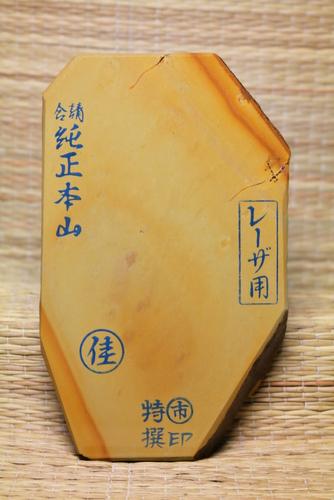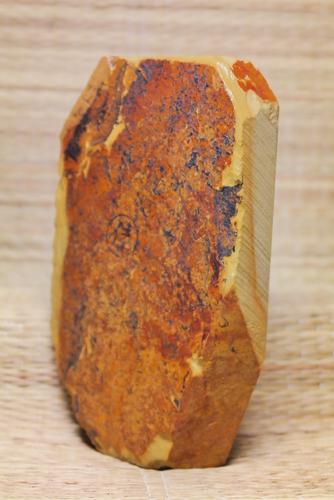Results 1 to 10 of 18
Thread: New Nakayama
Hybrid View
-
06-23-2017, 08:04 PM #1Senior Member

- Join Date
- Apr 2017
- Location
- Armonk, NY
- Posts
- 551
Thanked: 39 New Nakayama
New Nakayama
Just picked up this new Nakayama Maruichi Asagi Kan. There is kawa on the back and most of the sides. Do I still need to seal it with the kawa covering most of the non-working surfaces?


-
06-24-2017, 12:27 AM #2

Very nice stone.....
"A Honer's adage "Hone-Shave-Repeat"
~William~
-
06-24-2017, 12:33 AM #3

If it were mine, I would seal the sides and bottom with several thin coats of cashew urushi. I generally use 3 or 4 coats.
"Every normal man must be tempted at times to spit on his hands, hoist the black flag, and begin to slit throats." -H. L. Mencken
-
The Following User Says Thank You to sqzbxr For This Useful Post:
Matt1222 (06-24-2017)
-
06-24-2017, 12:37 AM #4Senior Member

- Join Date
- Apr 2017
- Location
- Armonk, NY
- Posts
- 551
Thanked: 39
-
06-24-2017, 03:49 PM #5Senior Member

- Join Date
- Apr 2017
- Location
- Armonk, NY
- Posts
- 551
Thanked: 39
-
06-24-2017, 03:56 PM #6

Nice stone! Cashew or urushi is more durable and much more trouble to use. Urushi is basically poison ivy sap so wear gloves, use it outside - and it takes a warm humid environment to cure.
I just use regular brushing lacquer. It holds up well enough and can be removed in an overnight soak in alcohol if you wish.
Cheers, SteveLast edited by Steve56; 06-24-2017 at 04:11 PM.
-
06-24-2017, 04:04 PM #7

No, cashew urushi is also known as cashew lacquer and is relatively safe and simple to handle; hon urushi is the traditional lacquer that is toxic and requires special handling and a controlled curing environment. This is the source I use: HyperCafe Japanese Sword Shop
"Every normal man must be tempted at times to spit on his hands, hoist the black flag, and begin to slit throats." -H. L. Mencken
-
06-24-2017, 04:24 PM #8

I use cashew form the above store. Dilute it with distilled turpentine. I don't use gloves. If I get some on my fingers I use the turpentine to clean them
 Transfer some to a lidded glass jar, I use a plastic spoon since it's a mess trying to pour it. Then dilute and apply. In warm weather it dries fairly quickly. Few layers and you are done.
Transfer some to a lidded glass jar, I use a plastic spoon since it's a mess trying to pour it. Then dilute and apply. In warm weather it dries fairly quickly. Few layers and you are done.
Just an anecdote. I was lapping a tomo, triangular shape, on an Atoma, no crazy pressure or anything and that thing just split in half. Despite that stone having
very thin layer of kawa on one side and no obvious fissures. Well now I have 2 tomos but it just showed my why it's important to seal.
-
06-24-2017, 12:38 AM #9Senior Member

- Join Date
- Apr 2017
- Location
- Armonk, NY
- Posts
- 551
Thanked: 39
-
06-24-2017, 12:52 AM #10

I always leave the kawa intact and lacquer directly over it. If you thin your first coat sufficiently, you'll have no problems at all. I prefer a tomo of similar hardness to the honzan. If they are both fairly hard and difficult to slurry, roughing the bottom of the tomo on a diamond plate will solve that. I generally seal my nagura as well, leaving just a working face exposed.
"Every normal man must be tempted at times to spit on his hands, hoist the black flag, and begin to slit throats." -H. L. Mencken
-
The Following User Says Thank You to sqzbxr For This Useful Post:
Matt1222 (06-24-2017)


 13Likes
13Likes LinkBack URL
LinkBack URL About LinkBacks
About LinkBacks






 Reply With Quote
Reply With Quote
